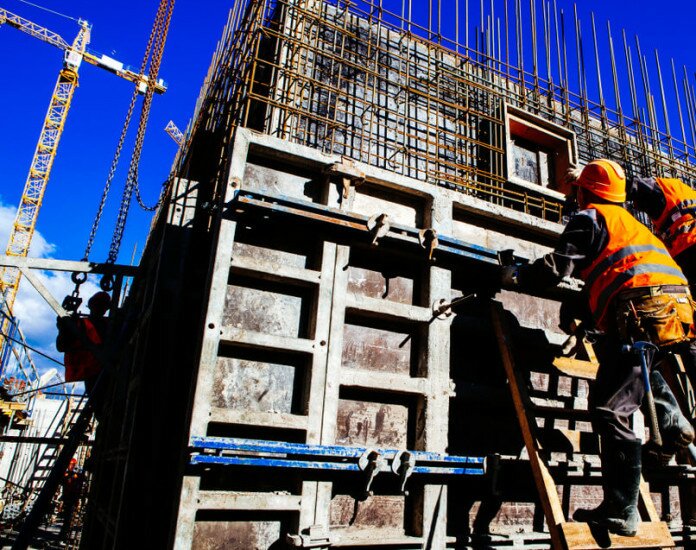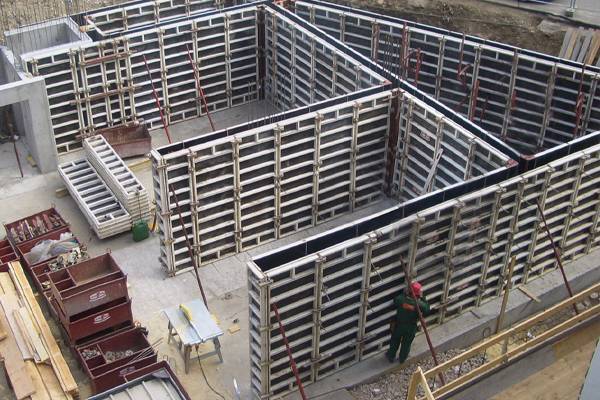How to store scaffolding in winter?
12 January 2026

Panel formwork is a temporary collapsible, adjustable structure used in construction as a forming auxiliary device. If done correctly, a mold is created for the foundation, ceiling, columns or walls, which is filled with concrete mixture. After the concrete has hardened, the formwork is dismantled. The formwork system allows you to create a flat surface in monolithic construction, with a maximum concrete pressure of 90 kN/sq. m. Various standard sizes of formwork panels help create precise shapes. Formwork panels are easy to stack; their repeated use ensures profitability and turnover. Internal corners and external corners allow you to conveniently mount the panels at an angle of 90 degrees. For casting walls located at an angle other than a straight line, hinged corners are used, and they are suitable for both internal and external corners.
Universal locks connect the formwork panels into a complete system. They are used both to extend panels upward and to increase the width of the formwork system.
Formwork panels allow the construction of straight sections of walls, right angles, and offset walls. The struts hold the panels upright, helping them withstand the pressure of the concrete. Leveling crossbars are used during the assembly of large-panel formwork to level the panels in the horizontal plane.
At the construction site, the formwork panels are assembled together into panels using wedge locks. In turn, the panels are assembled using nuts plus anchor ties that will withstand the pressure of the concrete mixture. Installation must be performed on a flat, prepared surface. In this case, it is necessary to follow the order of assembling the shields, control the tightness of the mating of the shields, and the reliability of fastening. The formwork is installed in accordance with the layout diagram. Wedge locks allow you to connect the left and right panels, as well as the upper and lower ones. 5 points of contact between the lock and the shields make it possible to tighten and align the shields with one blow of a hammer. The lock is lightweight, so it can be secured even with one hand while standing on the stairs.
Fastening the leveling beams in the middle of the panels, along the entire length of the panel, helps ensure the rigidity of the formwork system when raising and lowering, and also helps withstand the pressure of the concrete.

The struts are secured to the edges of the panels using anchors or flange bolts. For locking, flange nuts are put on the bolts. All struts should be placed on one side of the panel. As a rule, one strut is installed on a 2.5 m panel. If separate panels are mounted, struts are placed on each panel.
Installation of formwork always starts from the corner, and is supported by a double strut. The formwork panel is positioned vertically and the accuracy of installation is checked.
Anchor rods are installed in conical bushings. Holes without rods must be closed with plugs. A formwork system is also installed on the opposite side. The anchor rods are passed through the conical bushings of the opposing panels and are clamped with flange nuts using a ratchet wrench.
Scaffolding brackets are hung on the upper edge of the shield and fixed on the lower edge. Working scaffolding for concreting is installed on brackets. The maximum distance between brackets is 1.5 m.
The side railing, which includes railings, handrails and sides, is fixed to the railing posts, which are part of the bracket. During installation, you should use a straightening tool, but do not use a sledgehammer.
All cut-offs on opposite panels and opening-formers are fixed, the accuracy of the formwork installation is checked according to the project.
After the formwork has been completely assembled and checked by the foreman, the prepared form is allowed to be filled with concrete.
If you need vertical formwork, call us! We are ready to provide you with prices for formwork panels produced by a Ukrainian manufacturer.
You may also be interested in the formwork blog “How to properly install floor formwork?”